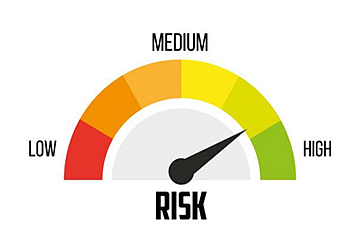The Re-emergence of Value Stocks: Opportunities and Risks
The re-emergence of value stocks poses excellent opportunities as well as risks. If you're not familiar with value stocks, think of them as the diamonds in the rough of the stock market. They're companies that investors often overlook because they're not the flashy, high-growth stocks that dominate the headlines.
But here's the thing: value stocks have been making a comeback lately and for a good reason. With the recovery from the COVID-19 pandemic and the resulting economic uncertainty, investors realize that companies with stable earnings, solid fundamentals and reasonable valuations might be a safer bet than the hot stocks that have been soaring to new heights.

So, let's look at the re-emergence of value stocks and what it means for investors.
What are Value Stocks?
Before we jump in, let's define what we mean by "value stocks." In general, value stocks are companies trading at a lower price relative to their earnings, book value, or other fundamental metrics. The market often sees them as "undervalued" because investors have overlooked them in favor of more popular, high-growth stocks.
Examples of Value Stocks
So, what kind of companies are we talking about? Some examples of value stocks include well-established companies like General Electric, Ford, and AT&T, which may not be growing as quickly as newer tech companies but still have solid fundamentals and a history of stable earnings.
The Intel Corporation is another great example. Despite being a leading semiconductor manufacturer with a market capitalization of over $200 billion, Intel's stock has been underperforming relative to its peers. The company has struggled with production issues and lost market share to competitors like AMD, which has led to a decline in its stock price. However, with a forward P/E ratio of around 10, Intel's stock may be undervalued compared to other tech stocks.
Other examples include:
● Ford Motor Company (F): Despite being an established car manufacturer, Ford has difficulty attracting investors. However, with its commitment to electric vehicle production and a restructuring plan, Ford's stock may be undervalued and present a valuable opportunity.
● IBM (IBM): IBM is another example of a company that has struggled to gain momentum in recent years. However, the company's investments in cloud computing and AI may position it for long-term success and make it an attractive value play.
● Chevron Corporation (CVX): Oil and gas stocks like Chevron have taken a hit due to the COVID-19 pandemic and the push toward renewable energy. However, as the economy recovers, these stocks may be undervalued and present a buying opportunity.
● Coca-Cola (KO): As a well-established brand, Coca-Cola is a reliable stock with a stable earnings and dividend payout history. While the company may not grow as rapidly as some of its tech counterparts, it offers investors a consistent return on investment and is considered a value stock.
Opportunities in Value Stocks
The market may realize that some high-growth stocks are overvalued. Tesla, for example, has seen its stock price soar to new heights in recent years, but many analysts believe its current valuation is unsustainable. Investors looking for more reasonably valued stocks may turn to companies with strong fundamentals and stable earnings, like those in the value category.

Resilient: Value stocks tend to be more resilient during economic uncertainty. During a recession, for example, consumers are likely to cut back on spending, which can hurt the growth prospects of high-growth stocks. Conversely, value stocks may be less affected by economic downturns because they're often more established and have a history of stable earnings.
Affordable: One primary opportunity to invest in value stocks is the potential to buy undervalued companies. This means that investors can purchase stocks at an affordable price than their intrinsic value, which presents an opportunity for the stock price to increase as the company's fundamentals improve. Value investors often look for companies with solid fundamentals, such as strong earnings or revenue growth, to identify undervalued stocks.
Risks in Value Stocks
The market may be overlooking value stocks for a reason. Some value stocks may be undervalued because they struggle to compete with newer, more innovative companies. In other cases, a company's earnings may be declining, which could lead to further declines in its stock price.
Slow growth during expansion: Value stocks may not perform as well as growth stocks during periods of economic expansion. When the economy is booming, consumers may be more willing to risk and invest in high-growth stocks, which can lead to a surge in their prices. On the other hand, value stocks may not experience the same level of growth during these periods.
Value Traps: A value trap is an investment that looks like a value opportunity but is poor due to its poor fundamentals or financial condition. In other words, investors may be attracted to the stock's low price but fail to recognize the company's poor prospects. As a result, the stock price may continue to decline or remain stagnant, leading to significant losses for investors. You should carefully research the company's financials and industry position before investing in value stocks to avoid falling into a value trap.
Conclusion
The re-emergence of value stocks presents both opportunities and risks for investors. On the one hand, value stocks may be a safer bet in times of economic uncertainty and may be undervalued relative to other stocks in the market. On the other hand, risks are associated with investing in value stocks, such as the potential for earnings declines or underperformance during periods of economic expansion.
So, what should investors do? As always, consider your investment goals and risk tolerance. Value stocks may be a good option for those looking for more stable, long-term investments, but they may not be the best choice for those seeking high-growth opportunities.
Ultimately, it's all about finding the right balance in your portfolio. By diversifying your investments across different stocks, you can mitigate your risk and potentially reap the benefits of value and growth stocks. If you are just starting out, now may be the best time to look at the value category and see if it fits your portfolio.



